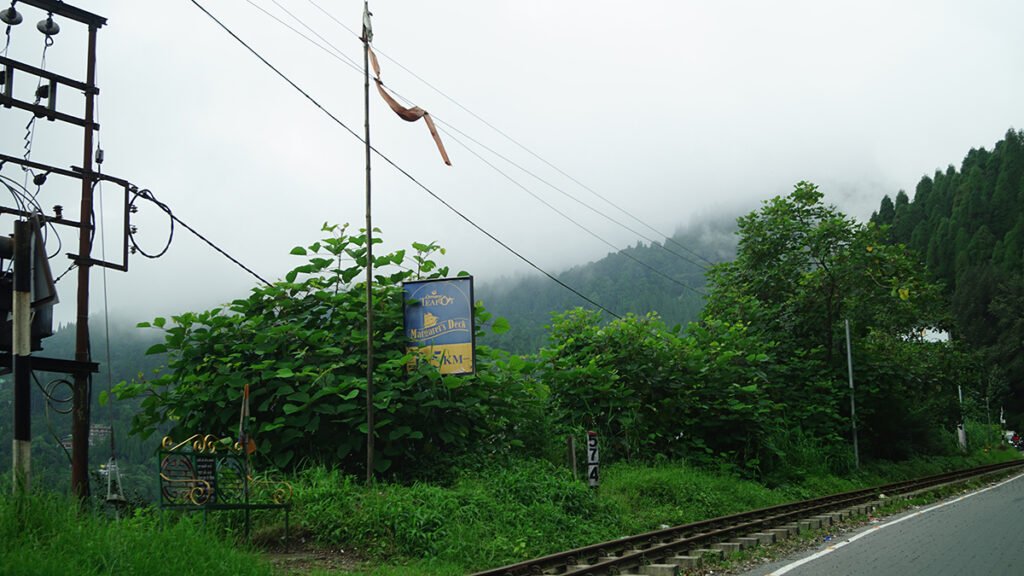
Day 2: Kurseong to Darjeeling
Darjeeling is called the Queen of Hills of the East & when it comes to North Bengal it is a hotspot for tourists. Darjeeling was not a top priority after having lived in Mussoorie the Queen of Hills of Uttarakhand, but for our networking plans we decided to take a 2 day trip further to Darjeeling. Drive from Kurseong to Darjeeling is a mere 30 Km & enroute we took a halt at 3 spots around Kurseong. The first stop was at Margaret’s Deck in a 20 minute drive from the Lodge.
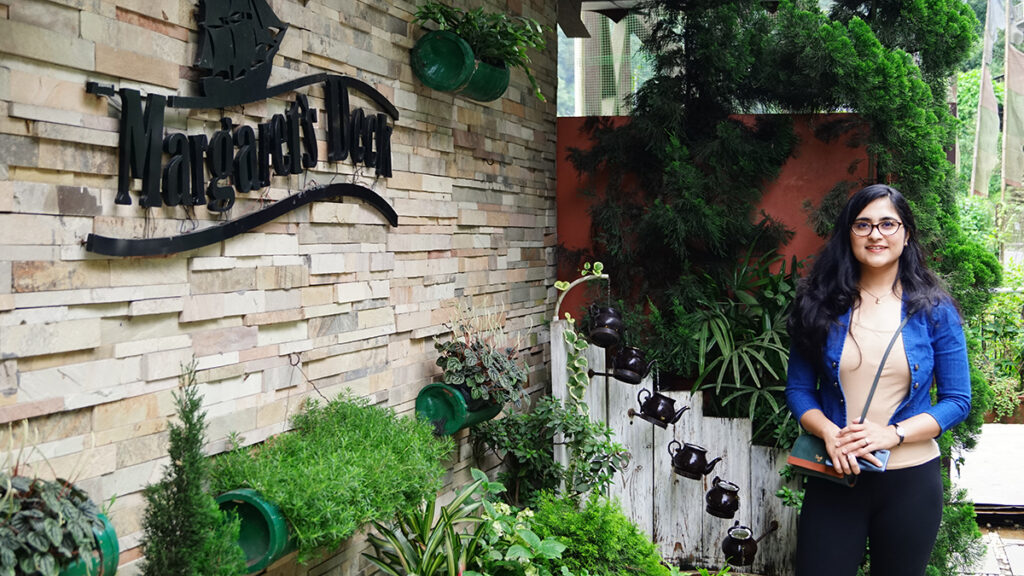
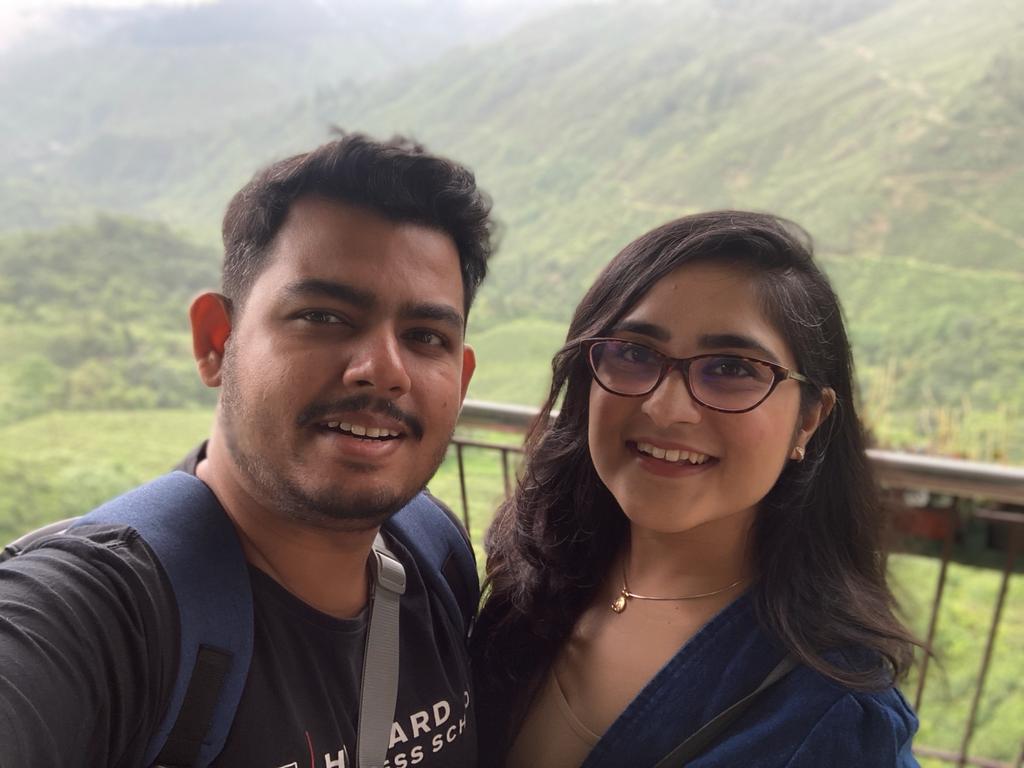
Margaret’s deck is named after Mr. Cruickshank’s daughter who was in awe of the lush greenscape of the tea estate her father managed. The deck dates back to 1862 when Margaret had to leave for London only keeping a promise to herself that she would be back. But as luck would have it Margaret passed away from a sudden illness on her way back home. It was her mourning father who baptized this place after his beloved daughter, as a symbol of her love for Kurseong.
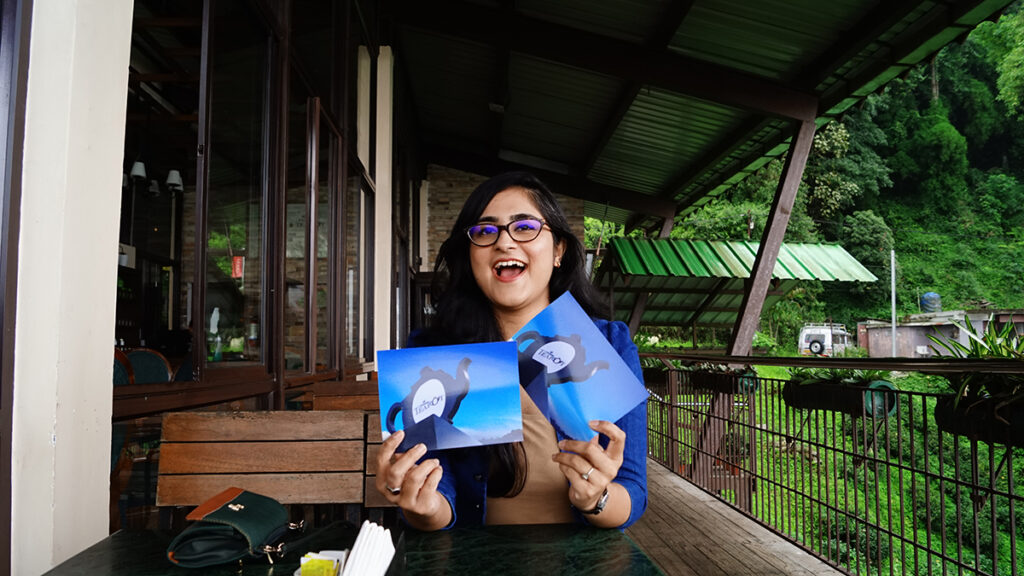
The deck comes with a full blown view of the tea estate below & the mountains adorned with a fresh breath of green. Seeing the gardens I did a bit of research only to know that tea was first bought to Darjeeling only in 1841 by Dr Campbell who in an experiment sowed few seeds of tea he got from China at his Bungalow in Beechwood, Darjeeling. When his experiment became a success it was in 1856 that the first commercial tea gardens were established. Today some of the most popular tea variants of Goodricke Tea originates from Darjeeling Tea gardens, including the ones at Margaret’s Hope, Castleton, etc. Here at Margaret’s Deck you can opt for an outdoor or indoor seating, depending on what you are looking for – The tea pot or the leaves! The tea estate here produces first flush (spring) tea & one cannot escape the aroma of the favorite beverage across the globe! From Margaret’s deck a 20 minute drive further brought us to Smarten Choling Buddhist monastery in Ghum.
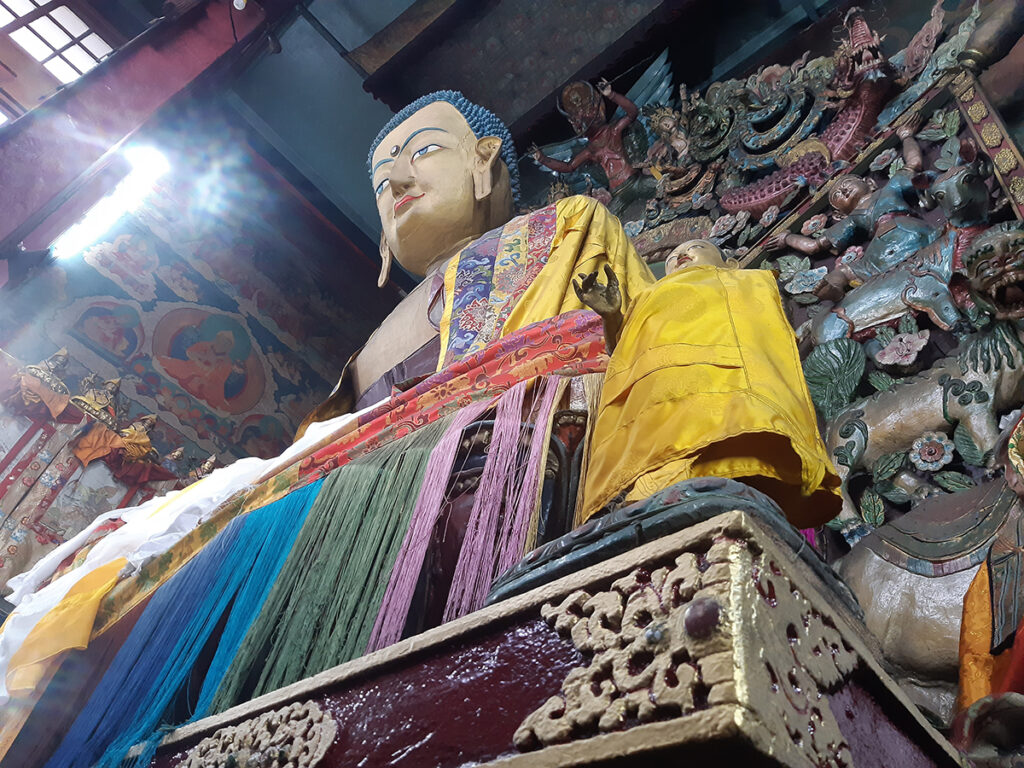
Known as the Ghum Monastery, its main attraction is the 26 ft tall Lord Buddha’s idol leaning forward as he looks upon the little monks. The monastery houses massive collections of books & manuscripts & has a definite spiritual aura within the premises. While we were making our way out we caught the little monks playing pass with a ball & I couldn’t help but join the fun. It’s beautiful to spend time with little monks for the sheer sincerity that you can witness in their youthful eyes.
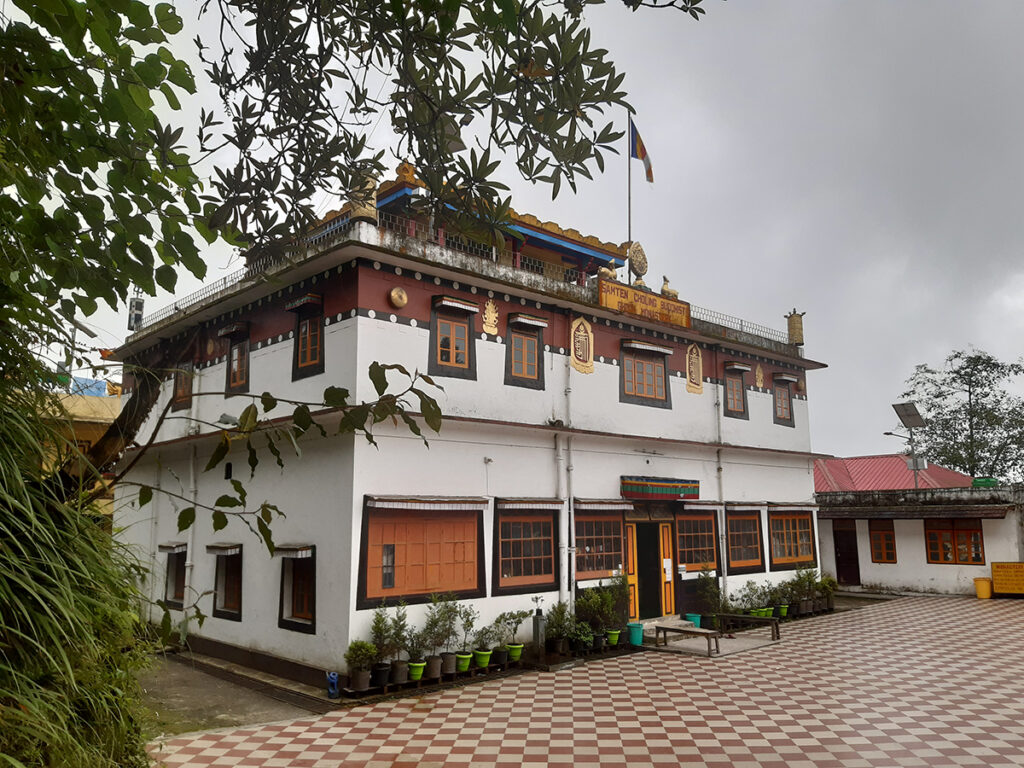
From Ghum our last spot was Batasia Loop, a memorial commissioned in 1919 by the British. The original purpose of this spot was an engineering need of the hour, where the toy train that connects Darjeeling from NJP was to be tested while moving downwards on a steep gradient from Ghum to Darjeeling. The need was to reduce the sudden fall of the train tracks to 140 ft & so Batasia Loop was created to confront this sudden descent. It is from here that the toy train takes a circular loop, crossing its own track through a tunnel below.
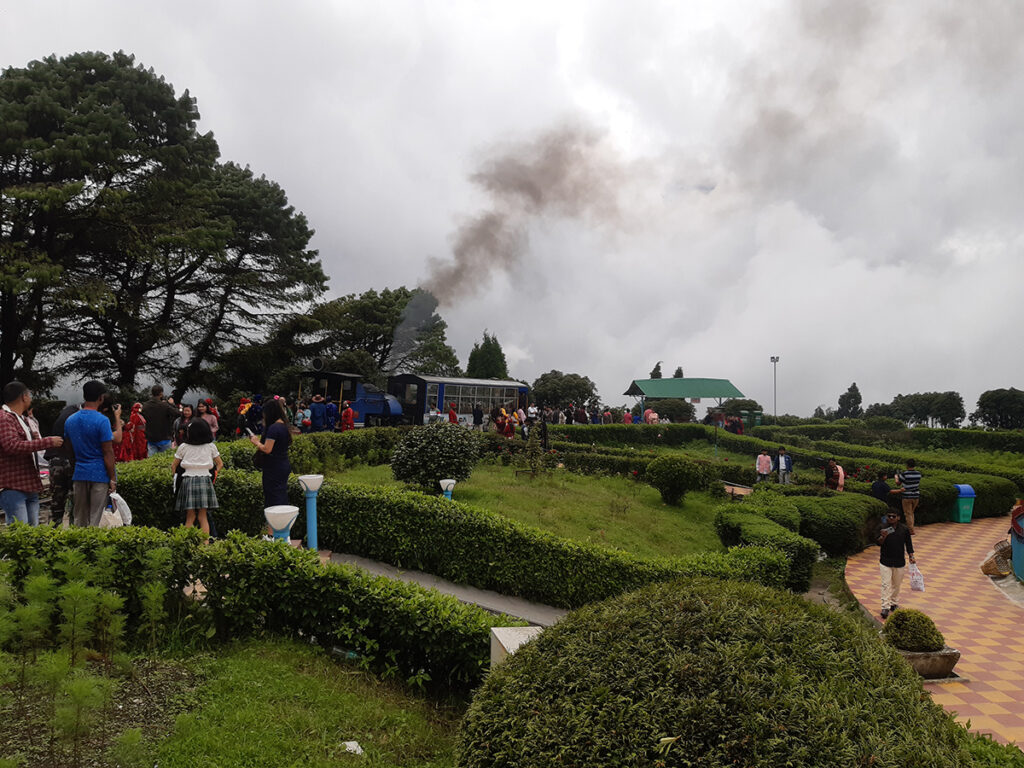
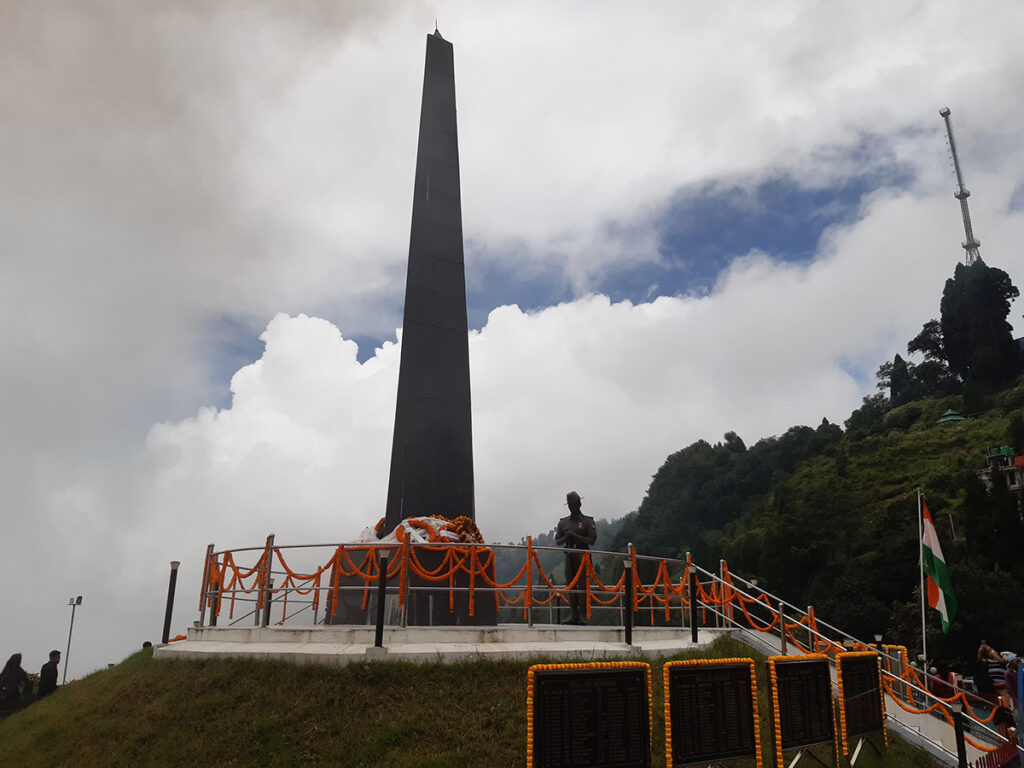
Such an engineering marvel for those times was a major achievement in the history of highest railway stations. Apart from this as a consequence Batasia was opened in 1995 (Post Independence) to commemorate the Gorkha regiment of Darjeeling & so it also became a War Memorial site. A gigantic cenotaph has been placed right in front of a Gorkha soldier’s statue paying homage. It’s a sight to behold under an open sky! For those who were booked on a Toy train ride, are given 15 minutes to enjoy a circular ride around the loop or just spend some time in the Eco garden around the premises. The entry ticket for this location is a mere Rs 30 per person.
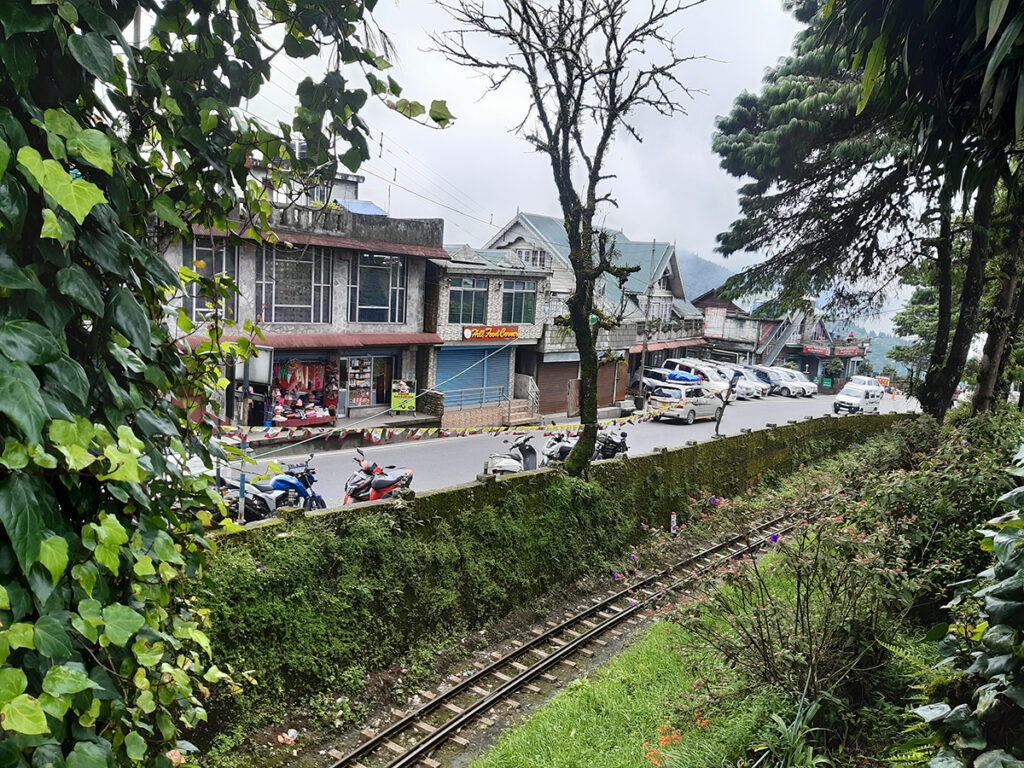
From Batasia loop to Darjeeling is a 5 km drive along the toy train route & across the taxi stand, you can either be dropped around Mall road or just take a walk from there towards the Mall.
Day 2.5: Darjeeling
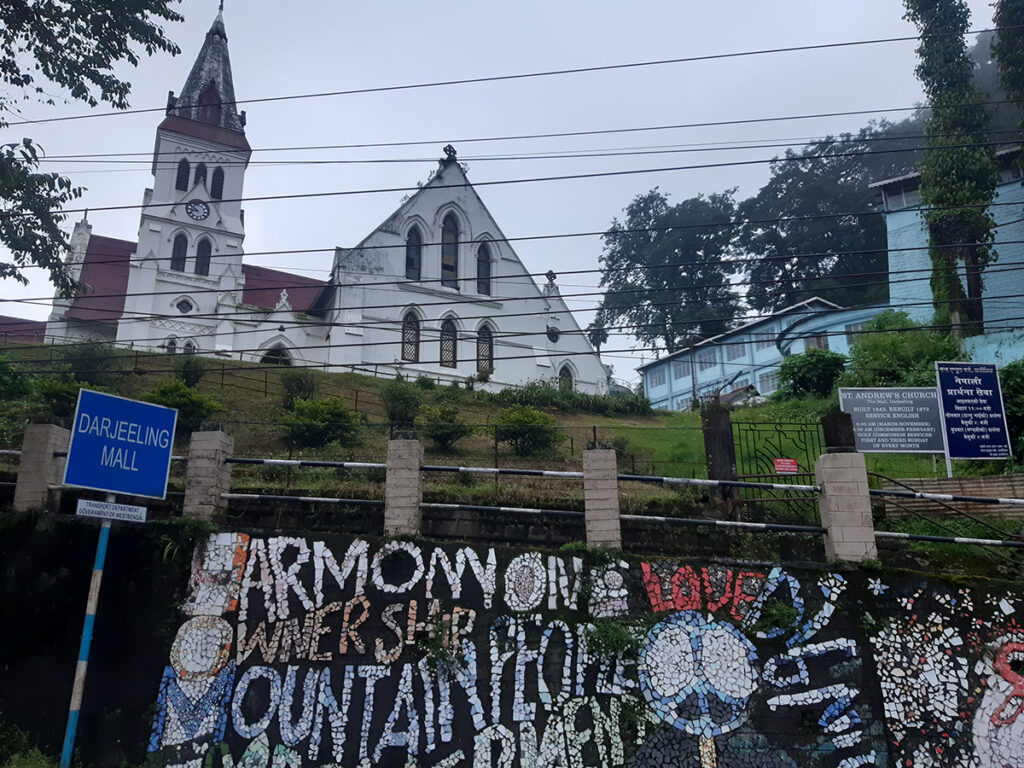
The journey to Darjeeling was more enjoyable because of the frequent breaks we took enroute. While during the peak tourist season, Darjeeling’s main attraction is the Mall road in July, the road was a breather for the off season travellers. After check – in we took a long afternoon mountain nap to charge ourselves for the evening walk. A touristy place will never sleep even if it is a hill station! We began our walk from St Andrew’s Church to the Mall road seeping in the life of locals of Darjeeling. The beauty of localites here is that they are extremely fit & lively, one could see people returning from their runs, some from their workplace while a group of young locals were rapping on the Mall. Technically, it’s never an off season in Darjeeling!
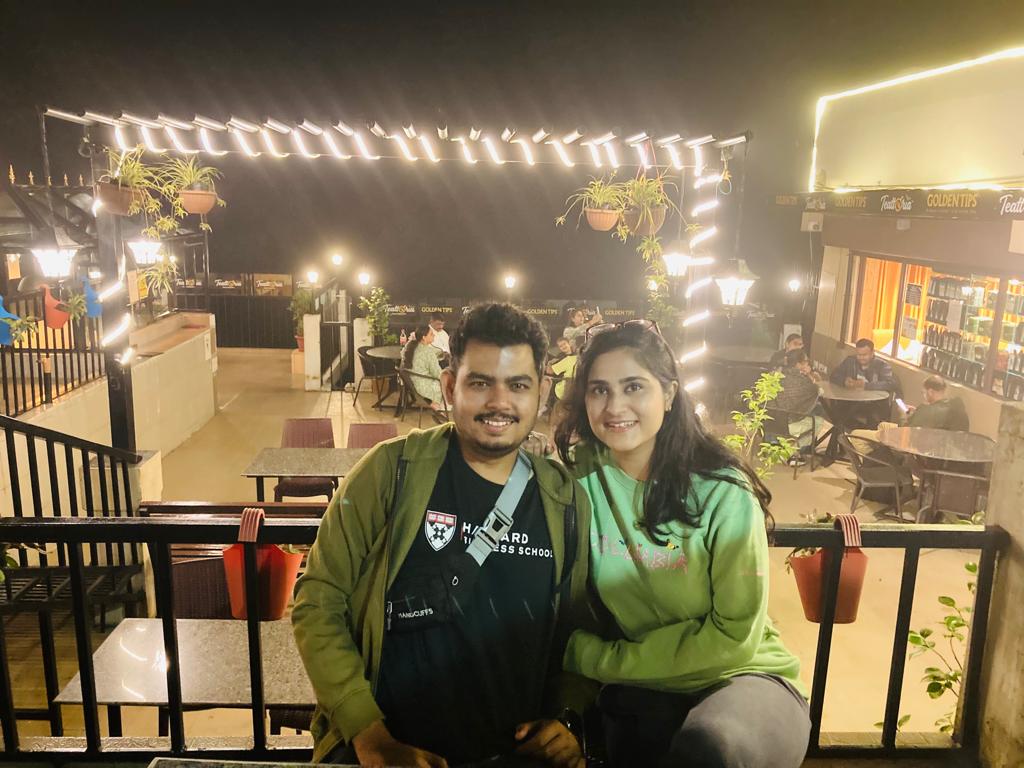
We eye marked the good sit out food joints & kept walking circular around the street food market near Glenary Bakery. From Glenary we further took a right turn into the quiet dark streets, tracing the same cab route we took while driving to Darjeeling in the afternoon. The streets are a testimony to the life of a township & you will fall in love with the monsoon misty streets here! Soon we found ourselves walking towards the Mall tracing the same route we began from & by now it turned out to be a good 30 minutes hike. Having bookmarked where we would eat out for Dinner during our first 10 minutes of walk, we walked straight into Teattoria Cafe & Tea Bar. Apart from outdoor seating facing the Mall, the Cafe also has an under the roof arrangement incase of weather change.
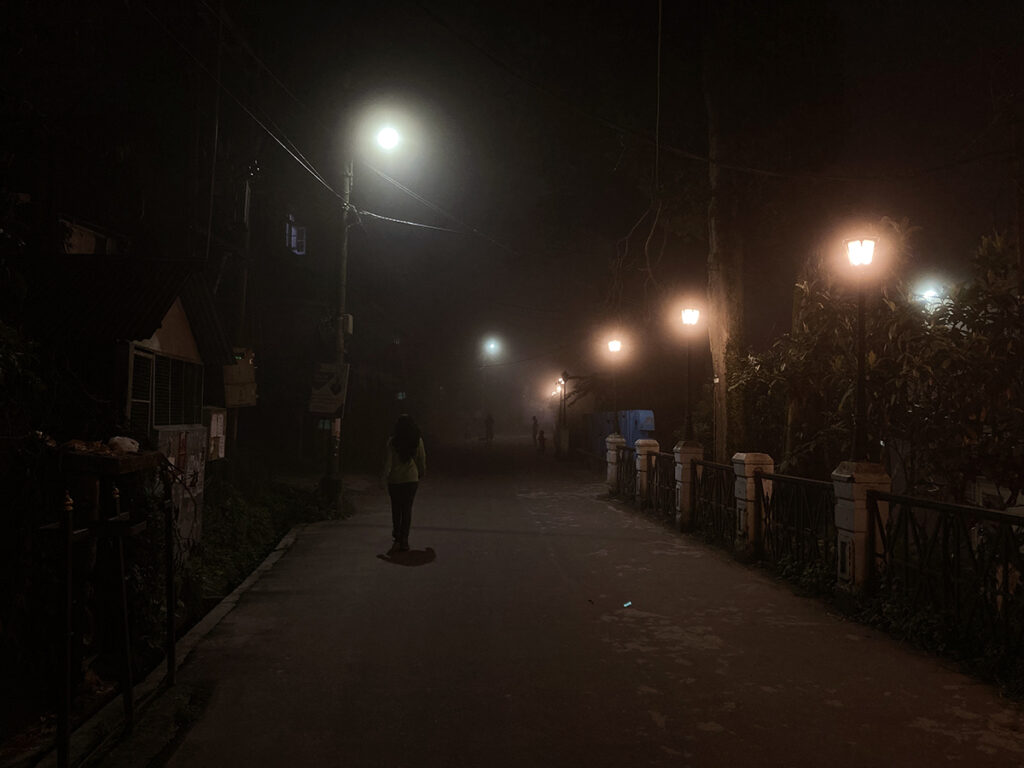
Misty weather called for a Hot tomato Basil soup & some Farm House Pizza (Warning: Mozzarella overload). We had hardly taken a few clicks in the fairy light -lit outdoor area, when it began drizzling & we rushed indoors. The food here is worth the price & a walk back on the foggy streets was enough to digest the food & fear of a lonesome dark mountainscape. Turned out the locals were so well blended in the monsoon mists of the Mall, we could only see them up-close or not at all! It was a leisurely day spent like any local would, but we were determined to take an adventurous route the following day.
DAY 3: Darjeeling to Himalayan Mountaineering Institute
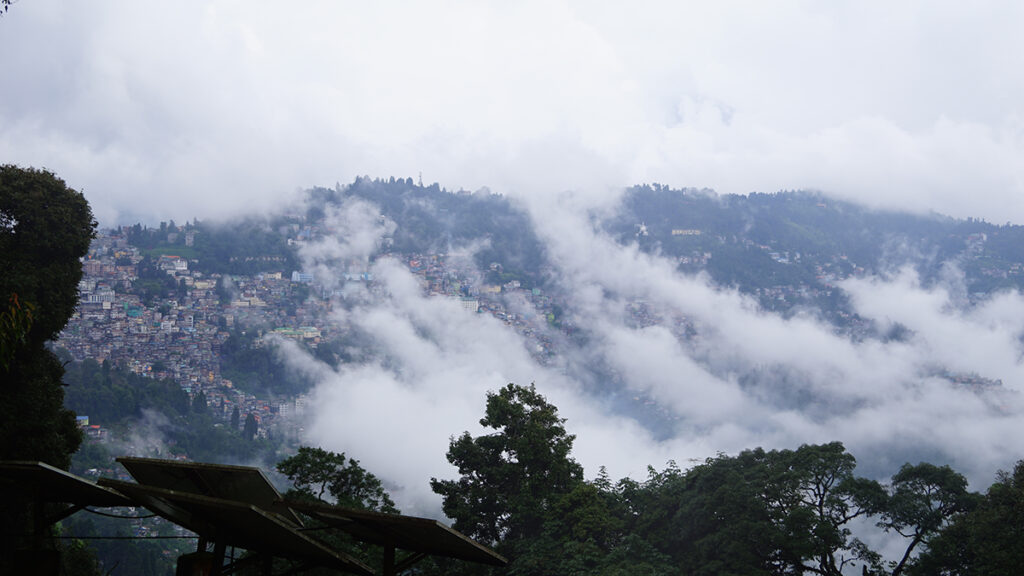
No, we didn’t rise with the lark, we rose with the sound of rain rattling on the roof top. It was a beautiful monsoon alarm clock & we made our way to have a quick breakfast. Today was pretty much unplanned on road, keeping in mind the rains & the non touristy affair we wanted with Darjeeling. We ditched all cabs, wore our rain gears & began our stroll on the opposite direction to The Mall Road. We walked across the Raj Bhawan (The Governor House) purchased from Maharaja of Coach Behar in 1877 to serve as the summer residence of the Governor Generals of India. The meandering roads here were resembled a mossy greenland & college students could be spotted enjoying a cup of tea under make shift shack.
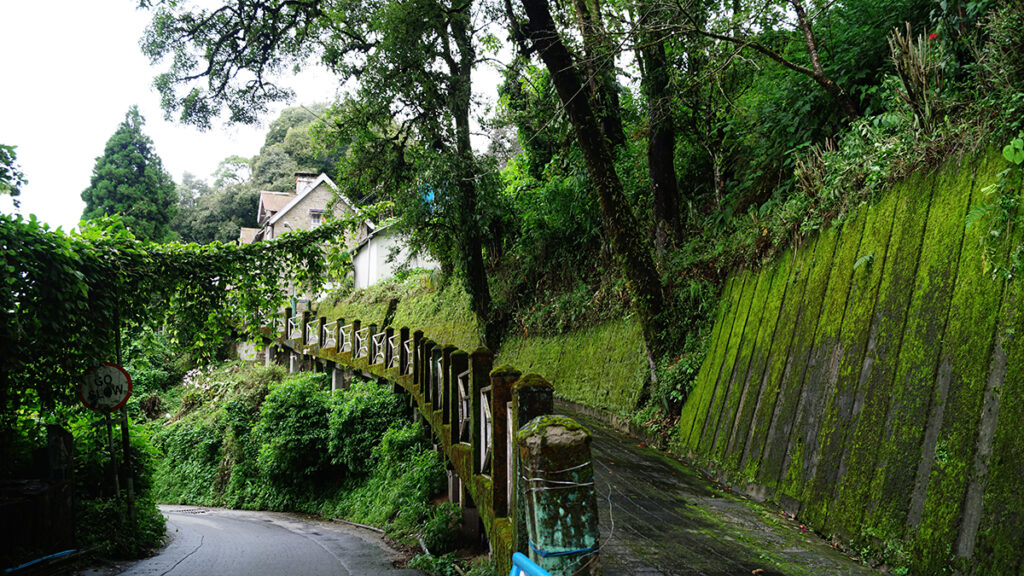
The drizzling was sporadic now, we continued our walk in between mists of cloud cover & clear views at the same time. A 2 Km walk one way brought us to Himalayan Mountaineering Institute (HMI, Darjeeling). For me there is an uncanny nostalgia for every mountaineering institute around India, even though I got my Basic Mountaineering Degree from NIM, Uttarkashi (Uttarakhand) I was thrilled to walk into the premises of an Institute whose foundation was laid by none other than Tenzing Norgay. To my surprise the Institute also houses a zoo & a Museum which is open to public, making me think – “another tourist spot?” Yes or No, we were yet to find out.
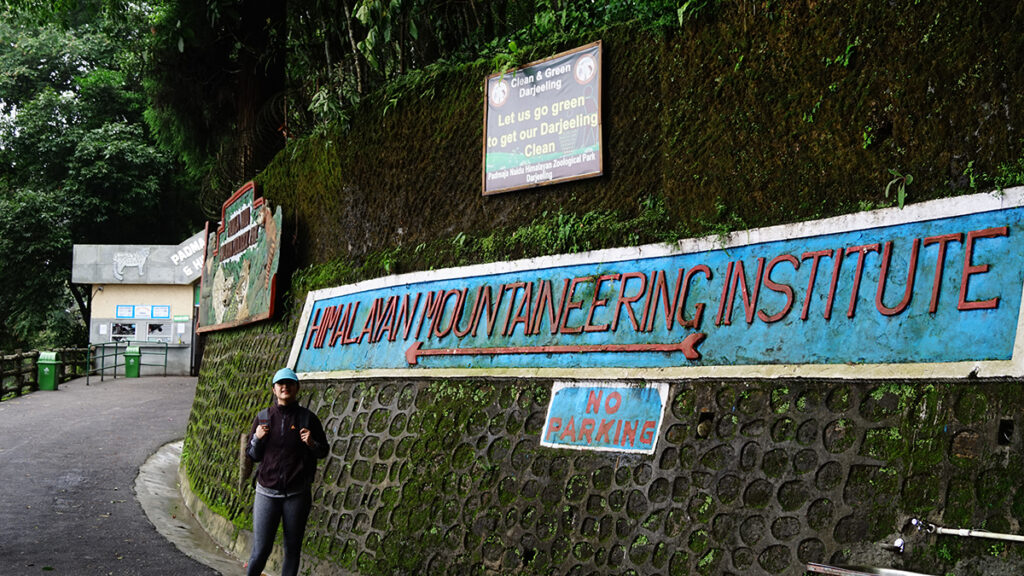
Buying a ticket at the gate for Rs 60 per person & Rs 10 for the Camera, was no biggie until we saw that families were herding the zoo premises. A reflex pulled us straight towards the Institute. Walking a mere 200 mt we spotted a black Himalayan bear on the top of a shed & it was only in turning back I realized we were not really in a City Zoo, it was a mountain zoo which meant it was designed to host animals in their natural yet protected habitat. Kicked, we walked further only to spot a Bharal (Himalayan Blue Sheep) resting on a rocky slope well known to remain motionless when approached. To me what stood out was their inward rolling horns, resembling an upside down moustache from a distance.
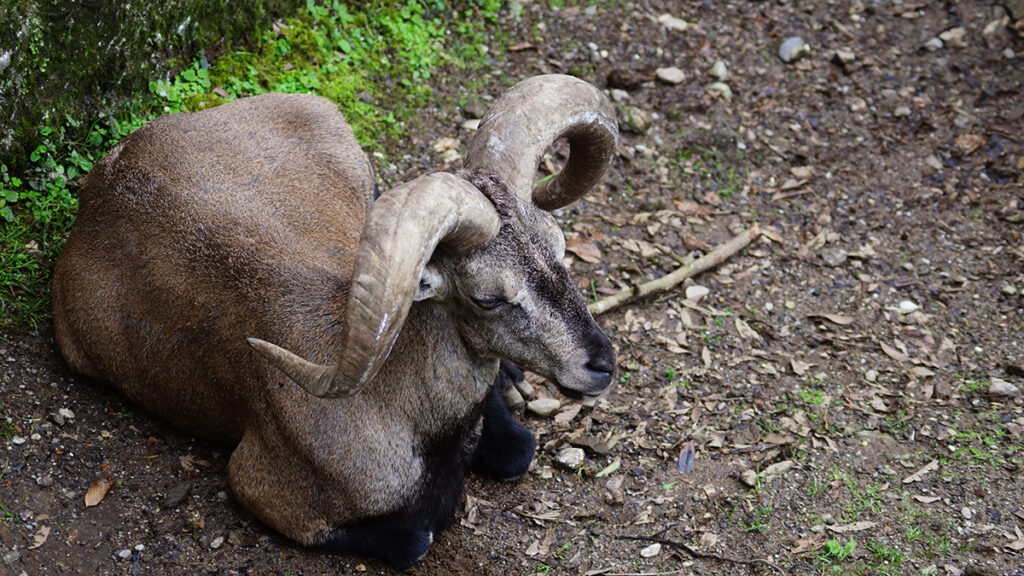
The variety of deers like, Sambar (Largest among Indian Deer) & Barking Deer were not an unusual site, yet an adorable one. Animals which were rare to be found in every Himalayan state was Goral & Mishmi Takin, a goat native to North East India. As we kept moving forward the road diverged, one taking us to the zoo & other straight to the Institute. HMI, welcomed us with a massive statute of a modern day mountaineer with the latest mountaineering equipment, foreshadowing the beautifully curated Museum which was the USP of our trip.
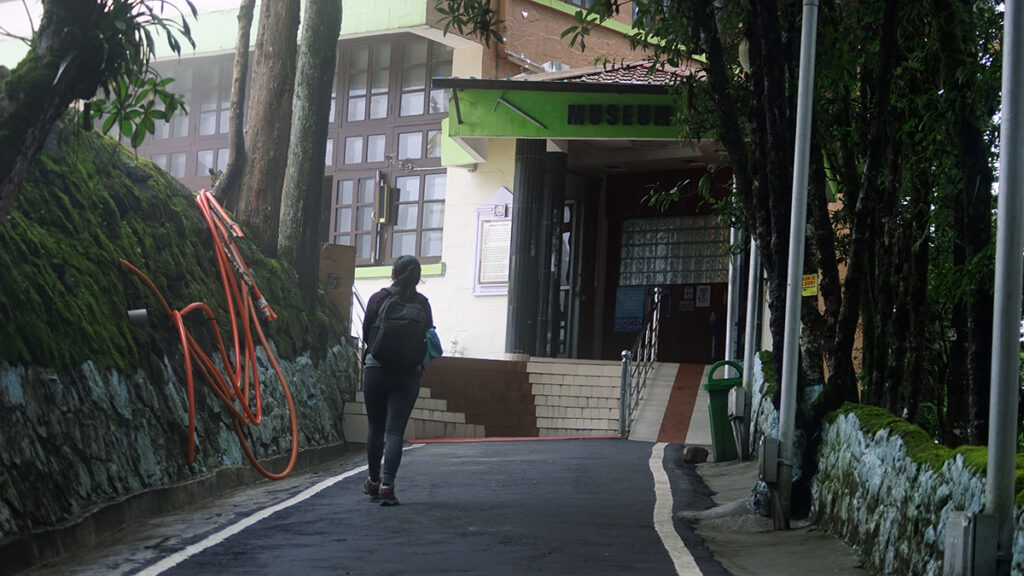
We walked uphill from the Institute to the Museum which is a splendid educational classroom for mountaineering enthusiasts. From the oldest mountaineering equipment to modern day gears used by mountaineers to scale the highest peaks in the world all were on display here. The real catch was an interactive way to learn about the Himalayan peaks via a 3D layout of the Himalayan belt from West to East, where each peal could be spotted by pressing a red buzzer in front peak descriptions in front of the visitor. The button would throw light on the respective Himalayan peak & rivers, it was truly a great way to develop curiosity, specially in the younger generation. We counted ourselves in the Younger generation. (Buzzers are fun anyway!)
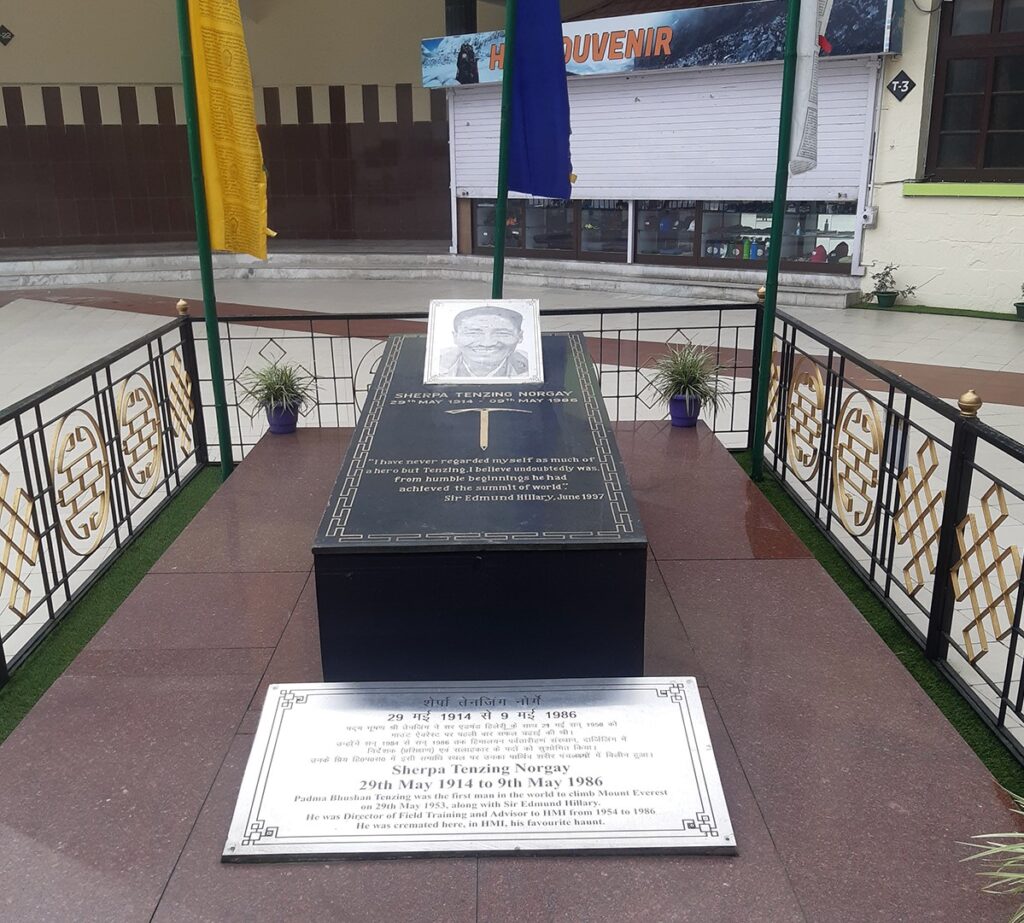
Next we moved to the first floor which housed letters, mementos & equipment used by mountaineers like Tenzing Norgay, Edmund Hillary; leading women mountaineers like Junko Tabei, Bachendri Pal, Poorna and the likes. The ladder used to cross the crevasse at Everest, the rucksacks of the 90’s & the sheer beauty of ice axes over the ages were thrilling to keep an mountaineering enthusiast glued to the museum. Next we moved to HMI cafeteria and there began a food hogging therapy with rainfall hitting the open verandah outside. It was all too good to be present there, right where Norgay’s remains are buried at the center of his “favourite haunt”.
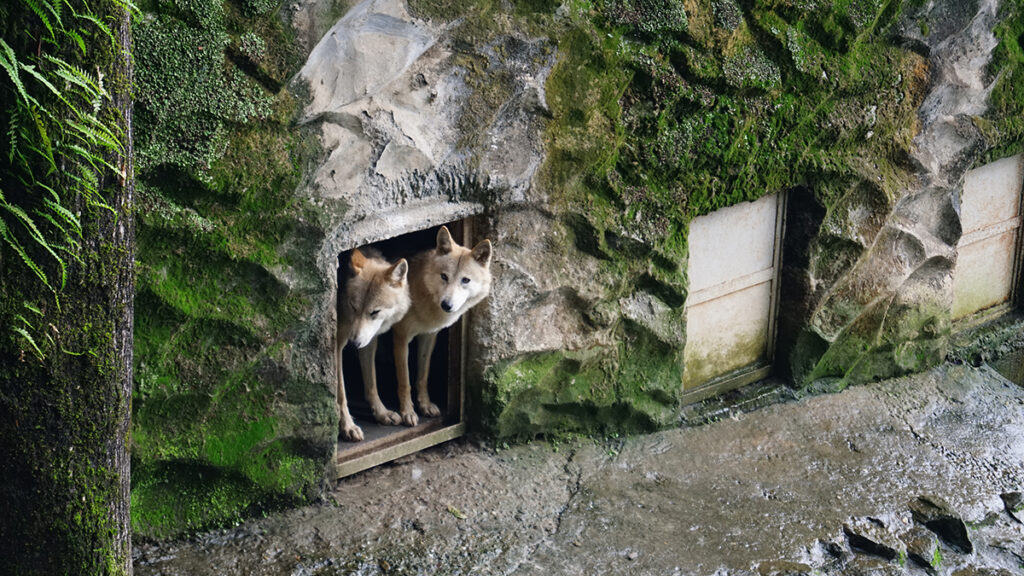
We began our walk back under the light drizzles to continue our zoo tour. The adventure continued as we now spotted leopard, black panther, a plethora of Himalayan birds chit chirping at their loudest best. The most beautiful of them all was a pair of Himalayan fox playing peekaboo from their den & out. And then came our last encounter with the Himalayan bears who made their appearance when we first entered the premises. Now we could finally watch two mighty old bears playing in the trails of a rocky mountain with their to & fro moment, definitely entertaining the visitors. We realized we had already spent a good 4 hours at HMI & the weather demanded to head back.
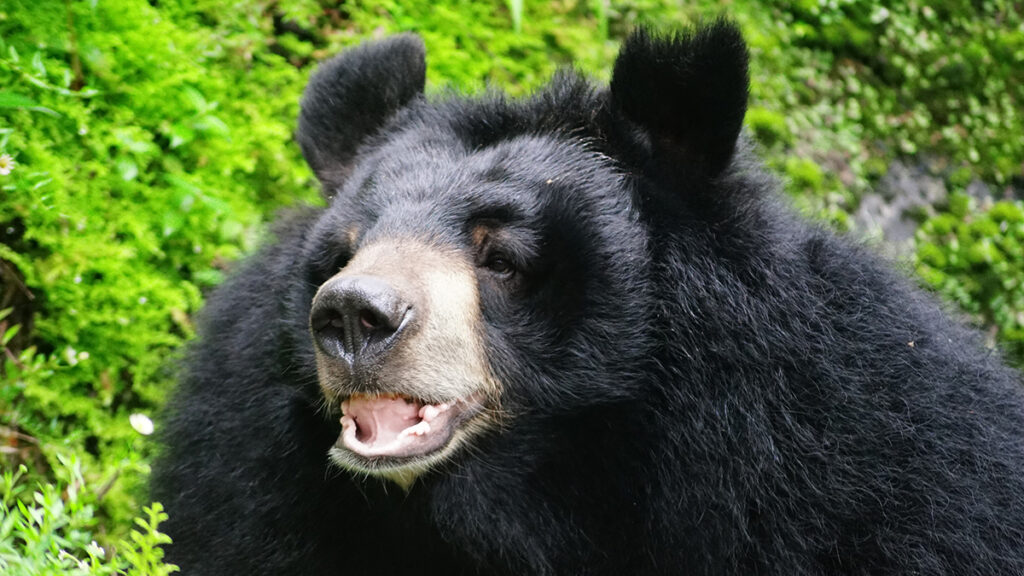
We had a quick tea at the street food lady vendors shack only to hike back along the misty roads of Darjeeling. The fulfilment of the day was not just the museum or HMI but the walk back which gave a sense of achievement at successfully engaging ourselves for so long at a hill station. Unlike the long treks & long road mapping we chose a pleasant way to explore Darjeeling & this was all about our unplanned trip. As we returned to our hotel, we changed only to hit the Mall Road for dinner on the last night.
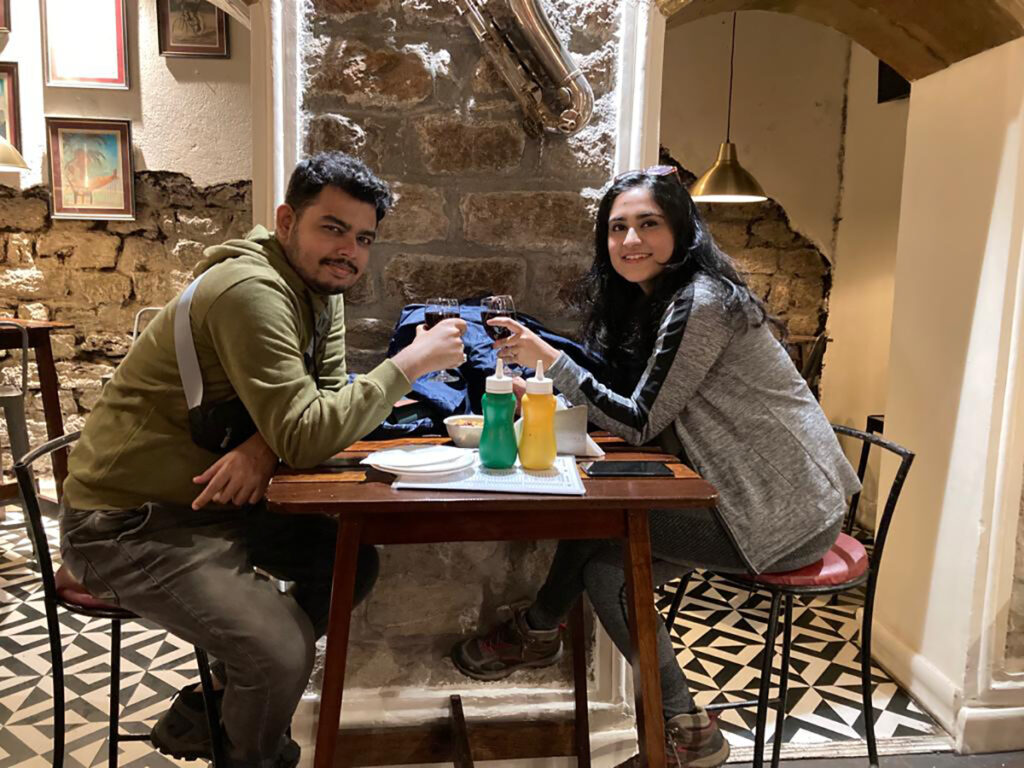
A good wine makes everyone rhyme. So, Glenary was our next stop for some wine & dine. By 9.30 Pm we tread back to our hotel in a supposed firefly infested Mall, which was delightful as a thought of the locals turning into lights of fire, igniting the misty silence of the living & the non living of Darjeeling.
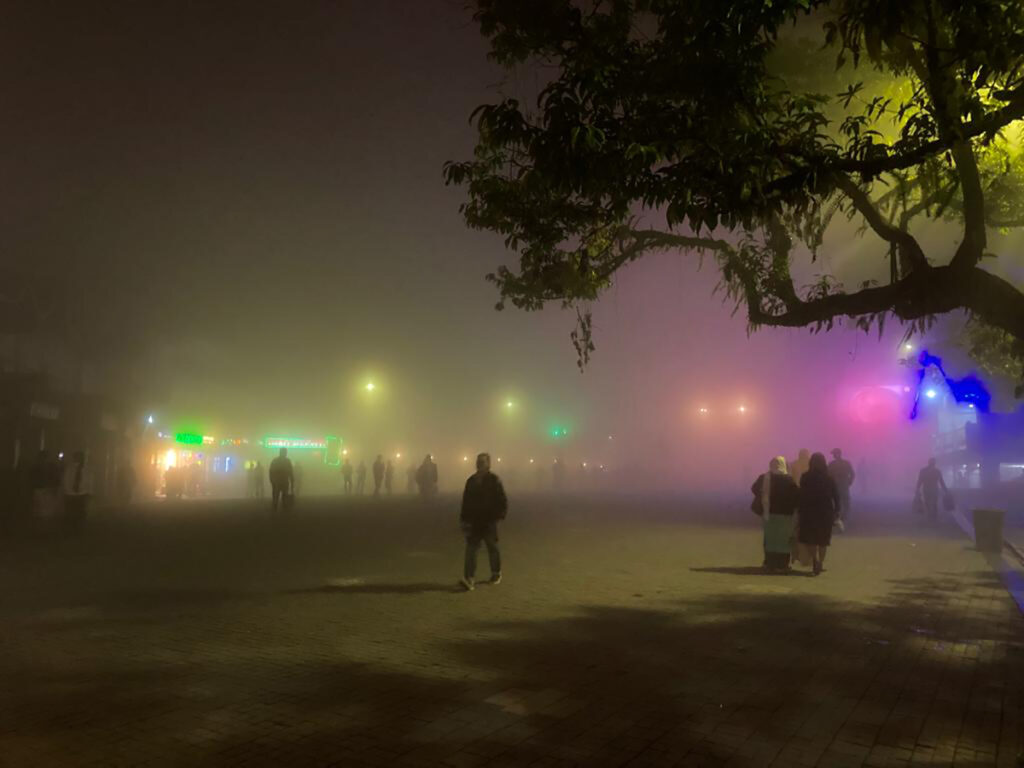

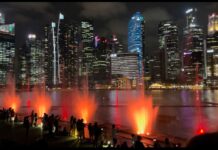

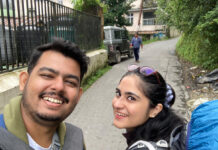
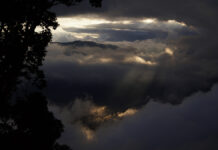
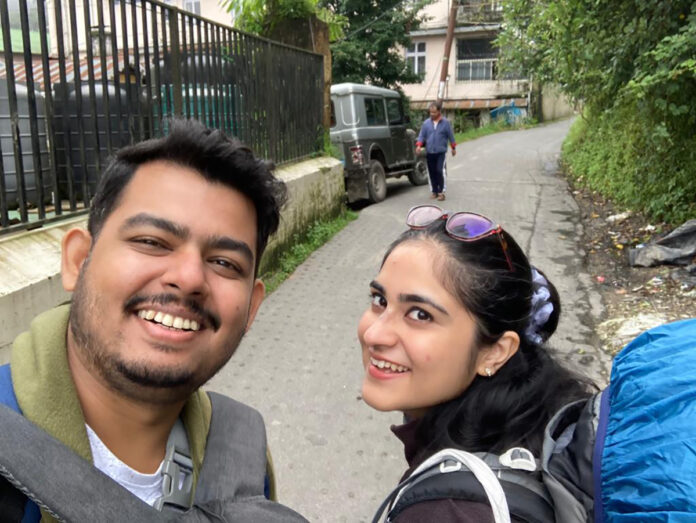
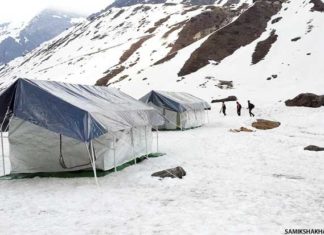
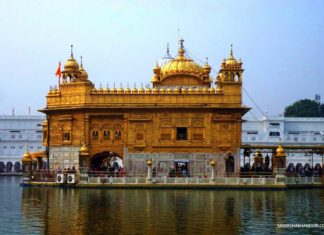
I love how descriptive this blog is and also the pictures are great.
Thank you Shekinah. Keep Reading 🙂
Best of luck!